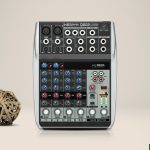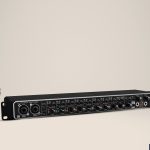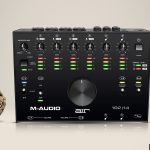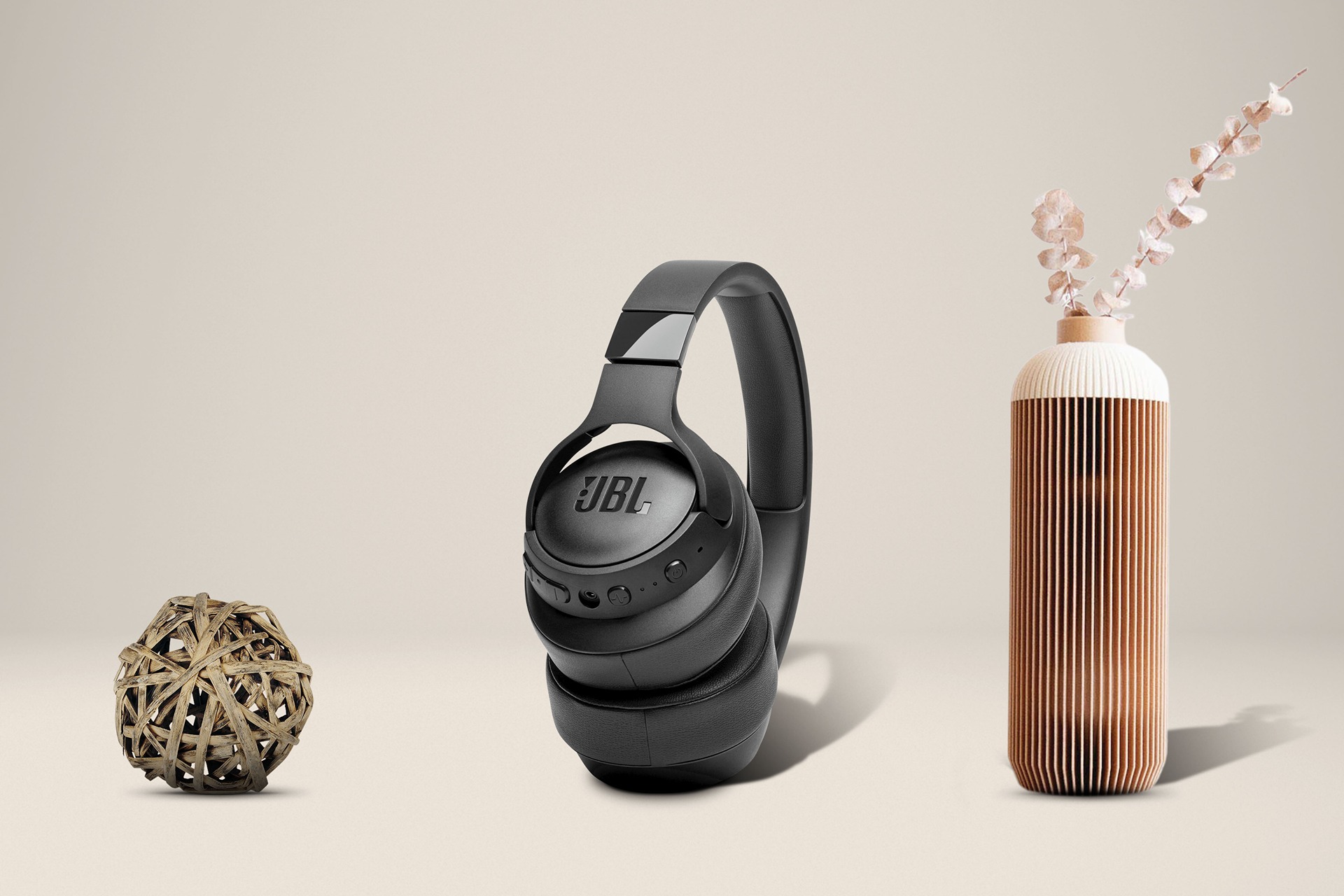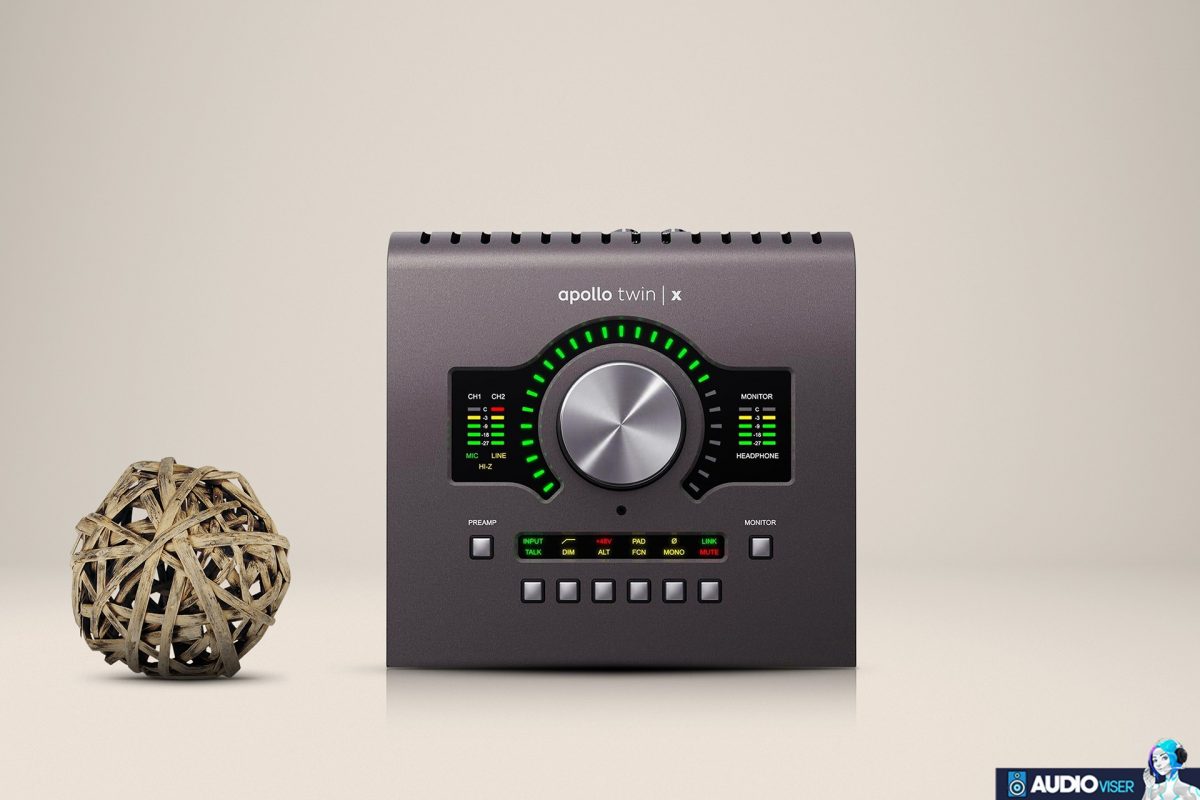
I am becoming even more passionate about this as I write more articles and realize there is much I still need to learn. Being able to share what you learn with so many others each day is just great. I share my expertise with many people all around the world every day, so it feeds me a lot spiritually and makes me more enthusiastic.
This time, I’m going to write an article about audio interfaces. This won’t be the first time I do so, but it will be the first time I rank the finest audio interfaces for voice-over. Please allow me to explain what voice-over means first of all.
A technique called voice-over involves adding a voice to a recording that isn’t the narration. Although IT is frequently linked to movies or TV shows, it is also employed in other audiovisual media, like documentaries and audiobooks.
We, therefore, require a fantastic audio interface that is suitable in this situation to make our recording sound good. To help you choose the best audio interface if you’re interested in buying one, I’ve selected a few audio interfaces that are frequently used in voice-over. I believe I have started babbling excessively once more, so let me now begin by exposing you to the top 5 best audio interfaces for voice over.
| Image | Product | Features | Price |
|---|---|---|---|
Best Budget  | 10 | Check Latest Price | |
Most Versatile  | 9 | Check Latest Price | |
Best Value  | 8.5 | Check Latest Price | |
Best Runner Up  | 8.8 | Check Latest Price | |
Best Overall  | 8.6 | Check Latest Price |
The Top 5 Best Audio Interfaces For Voice Over
5. Steinberg UR12 – Best Budget

With the UR12, Steinberg displayed a multitude of successes. The only thing that sets this product apart from competitors is the fantastic pricing it provides. No worries at all if you’re wondering how a product with such a low cost can deliver good quality. I can hear folks asking that as they read this. Unexpectedly, this tool delivers a lot more than you might anticipate, especially for those working in the voice-over sector. You will comprehend it much better if I begin by outlining its features, so allow me to do that.
Let’s now examine this product’s characteristics and advantages. This popular audio interface maintains a simple design and seems to be the most durable one available. The XLR input, which is phantom powered, and the Hi-Z 1/4″ instrument input are both located on the front panel. An independent gain control knob with LED indications is present for each input. Additionally, a headphone port with a direct monitoring switch is seen there. The switch for the power supply alternates between 5 V DC power and USB bus power. Unbalanced RCA and TRS outputs are quite typical for an audio interface at such a low cost.
We don’t often see some of the innovative ideas that Steinberg UR12 offers. Overall performance is passable, and the sound quality is excellent. It has a wonderful sound, operates well, and is bomb-proof. It functions flawlessly with computers running Windows, Mac OS, and other audio interfaces. This means that this audio interface gets the job done.
A/D Resolution: 24-bit/192kHz
Computer Connectivity: USB 2.0
Simultaneous I/O: 2 x 2
Why Should You Buy It?
Given its inexpensive cost, it is surprising that this audio interface offers so many capabilities and such great quality.
4. Audient Id4 – Most Versatile

This one has the design that most appeals to me; it is remarkable and has a sleek appearance. However, it is not only about the design. People who create voice-overs can benefit greatly from this audio interface as well. When buying an audio interface, we should focus more on its features than on how it looks because they are more amazing. I can state that it belongs among the greatest. When I write about such wonderful items as this one, I become thrilled, and I’m eager to start describing all the features Audient ID4 has.
It should come as no surprise that I shall begin with the inputs and outputs of an audio interface as those are its most crucial components. Two separate headphone jacks and a TRS instrument-level input are available on the front panel of this audio interface. Two balanced TRS inputs, an XLR/TRS combo input that we may argue is a drawback because it is a combo, and a USB-C connector can all be found on the rear panel of the device. The LED lights that indicate whether USB-C power is activated as well as an LED meter are mounted on top of this product. Not to be overlooked are the volume control, the direct monitoring mix knob, and the gain controls for both inputs. This audio interface’s ID button is crucial; pushing it converts the master control into a mouse scroll, which allows you to operate the knobs and faders in your DAW. As you can see, there are numerous aspects of this product to discuss, which demonstrates how versatile it is.
I may say that the Audient ID4 is transparent and offers a gain of 58dB while remaining quiet. I should point out that this series’ preamps have been updated, and they have a 120 dB dynamic range. I find the distortion to be both natural and appealing. This gives us a big sound in a tiny footprint, according to the facts provided below.
A/D Resolution: 24-bit/96kHz
Computer Connectivity: USB 3.0
Simultaneous I/O: 2 x 2
Why Should You Buy It?
The two headphone outputs, high quality audio and the mic input make this go head to head with any high end audio interface out there. With its excellent sound quality and abundance of functions, this audio interface may be the most flexible you can find.
3. Universal Audio Apollo Twin – Best Value

There isn’t anything more you can ask for in an audio interface, yet this one makes you want more.
Almost always, Universal Audio Apollo Twin gets it right. a fully functional audio interface with top-notch sound and all the functionality. What more should we demand? There is, in my opinion, nothing unfavorable to say about this one. Given that we are discussing the finest audio interfaces for voice-over professionals, it is evident that this is the product to choose and you won’t be disappointed in the slightest. It debuts on the market with the most cutting-edge innovations that delight the clients. Perhaps the price will be a little higher than anticipated, but the outcome will be worthwhile. There are a lot of things to say about this product, so let’s save time.
Its name tells us that it is a Twin, which indicates that it is a replica of the original. One aspect of it that we would have like to modify is the absence of a Thunderbolt cable on its Thunderbolt interface, although this is minor in light of the other features and high caliber of the product. The Hi-Z guitar and the headphone output are visible on the front panel of this audio interface. Now let’s explore the back panel, where we can see the two-line, two monitor, and combined microphone/line outputs. Up to eight analogs can be added using the ADAT optical jack. For each function, the LED in this Twin provides visual feedback. The knob that controls the preamps and monitors parameters is located on top of the audio interface, which has six dual-function buttons on the top. Utilizing the preamp control and monitor control, you can switch between a variety of things. Zero-latency, which is crucial for your recordings, is achieved by this product’s use of Unison preamps. Due to the updated stellar AD/DA converters, this twin offers a wider dynamic range. What else should I say to make you people aware of how amazing this product is?
I have to highlight a few things about the Universal Audio Apollo Twin. The sound quality that the Universal Audio Apollo Twin provides must be excellent, and it is. It provides the recordings with a natural effect and clarity. With the Universal Audio Apollo Twin audio interface, everything appears to be flawless. Consequently, this purchase will be worthwhile.
A/D Resolution: 24-bit/192kHz
Computer Connectivity: Thunderbolt 3
Simultaneous I/O: 10 x 6
Why Should You Buy It?
The Universal Audio Apollo Twin has unimaginable features, and the quality it offers is everything a voice-over expert could possibly need. For the price, this is better than most interfaces out there.
2. SSL 2+ -Best Runner Up
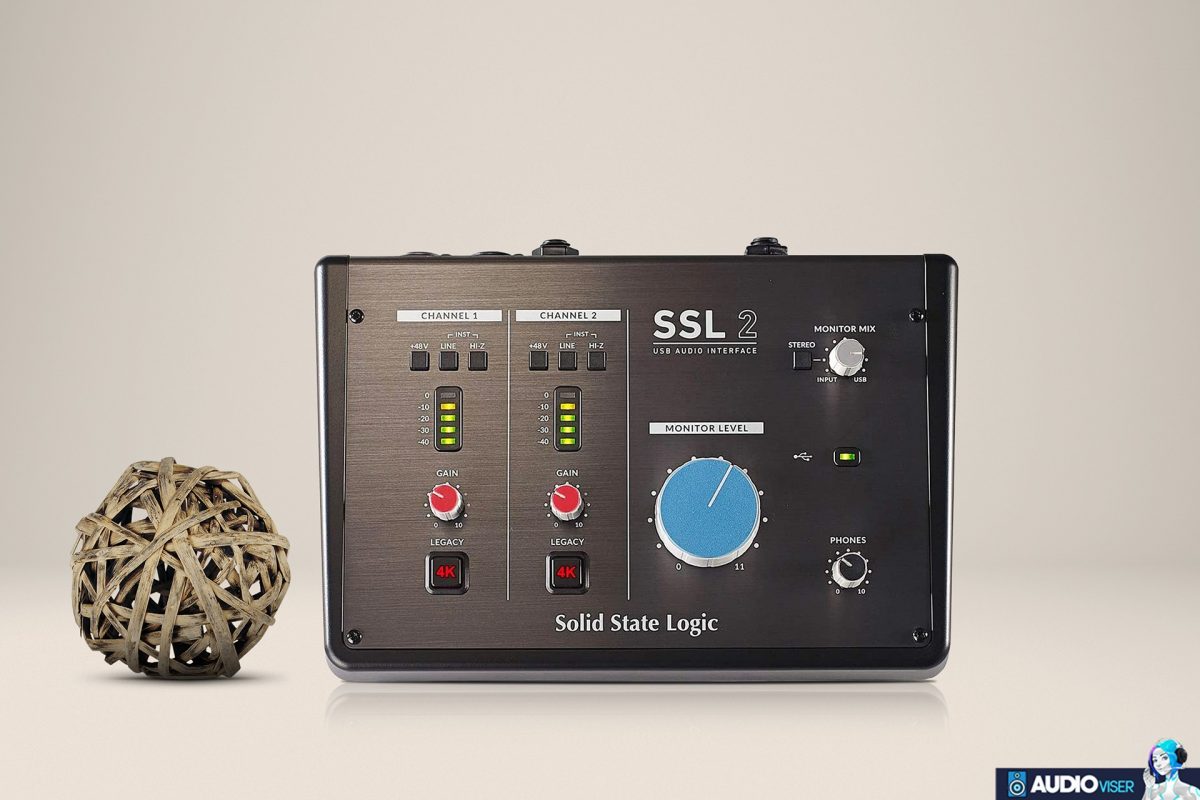
There is no way to avoid mentioning the SSL while discussing audio interfaces. This time, I’ll talk about the SSL 2+ since it’s one of the audio interfaces voice-over professionals use the most and because it consistently provides amazing solutions, which is why they adore it so much. The majority of the time, this company’s products are a bit pricy but don’t worry about it because they give the best features and fantastic sound quality, which is particularly crucial in this situation. You won’t regret investing in an audio interface because it will offer many more features than you require, and you will be happy with the results. I will now do everything in my power to keep you updated on the qualities and features of this product.
With a modern appearance and excellent audio quality, the SSL 2+ enters the market with a lot to offer. As usual, I’ll start by describing the audio interface’s inputs and outputs. Two XLR/TRS combination inputs, a USB-C port for connecting to a computer, and balanced monitor outputs are all included with the SSL 2+. It is a 2 in 4 out USB interface with two RCA outputs and additional MIDI inputs and outputs. There is also a headphone output accessible. The 48v option allows for the connection of a dynamic and condenser microphone. There are also other switch options, as well as peak level meters, Gain sliders, and 4k buttons below them. As you can see, voice performers have a lot to gain from using this audio interface. It’s definitely one of my favorite audio interfaces for voice over.
A/D Resolution: 24-bit/192kHz
Computer Connectivity: USB 2.0
Simultaneous I/O: 2 x 4
Why Should You Buy It?
It is clear that this audio interface has a lot to offer voice actors and can provide the desired recording for a reasonable price.
1. Focusrite Scarlett 4i4 – Best Overall
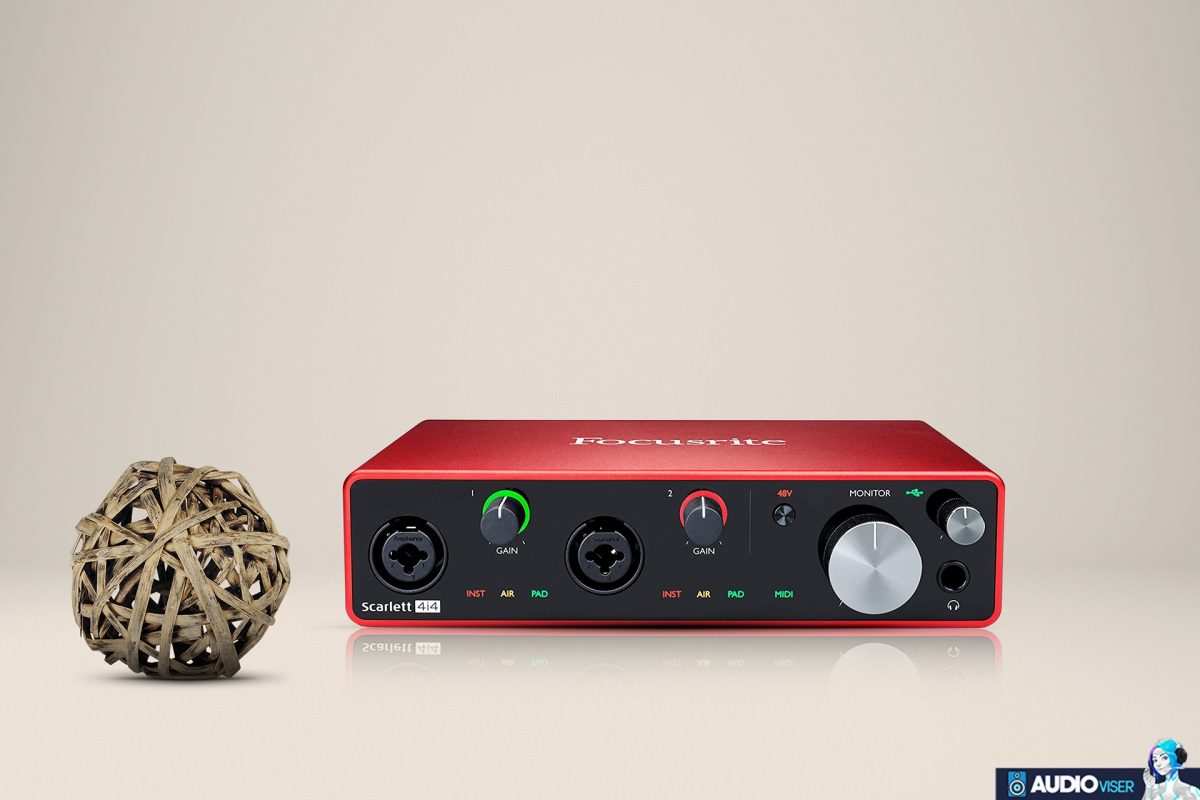
It’s ‘Focusrite Scarlett 4i4’ o’clock. Focusrite has a significant influence in this industry, but to be honest, this is not by accident. As I began my investigation for audio interfaces, there was no way I would not find it referenced in every article. Focusrite gives voice actors everything they require for a top-notch recording without breaking the bank. Therefore, this one truly is the “GOAT.” With this product, you will complete the task at hand with ease, happiness, and no regrets. With all of the features and quality it provides, it appears on the market as if it were a dream. It is simply too good to be true. You will realize that I did not exaggerate when you read this review. Let’s the journey begin.
This gadget has excellent audio recording quality in addition to a good appearance and ideal functionality. We can see the two inputs—XLR and TRS—on the front panel of this audio interface, each with its settings for air choices, instruments, and, of course, gain controls. There is also a phantom power button for condenser microphones, a headphone jack, and a dial for monitor levels. The gain controls provide information on the recording level, and a color-coded display of that level is provided. Four balanced line outputs, two balanced line inputs, a MIDI input/output, and a USB-C port are all located on the rear panel. Your recording will sound open and bright thanks to the switchable Air option, which provides the necessary quality. Compared to its earlier generations, the high-performance controls have also been improved. This is the most popular audio interface out there, and that is for a reason.
A/D Resolution: Up to 24-bit/192kHz
Computer Connectivity: USB 2.0
Simultaneous I/O: 4 x 4
Why Should You Buy It?
I have covered every aspect of this product, and it is quite evident that there is no better option. So without a second thought, just get one.
Buying guide
There are several things to take into account before deciding to purchase an audio interface so that you don’t regret it later. To provide you with some basic information on what to consider when purchasing an audio interface, I created this buying guide.
Outputs
The most important part of the section is the headphone outputs. Stereo output is essential, but other output configurations are also feasible. Having several headphone outputs will also allow for the output of different headphone mixes.
Inputs
The inputs, which normally have two inputs and can take both line-level and microphone signals, are a crucial part of audio interfaces. Interfaces come with XLR inputs, USB inputs, MIDI inputs, and other possibilities. If the inputs include preamps, you can utilize many microphones at once.
Preamps
Preamplifiers are used to amplify low-level microphone signals at each microphone and instrument input. An interface can only employ two preamps or eight microphone inputs with preamps. The audio quality of your recordings may be superb if your interface has preamps.
Price
The price of this technological equipment might be fairly exorbitant, as is well known. We all want to find something, nevertheless, that is less expensive. As a result, a variety of interfaces are offered that will deliver the appropriate sound impact while being cost-effective.
Final Words
My article is now complete, people. I did my best to provide you with all the details you required for these audio interfaces so that I could advise you before you made your choice. I sincerely hope you enjoyed reading this piece, and I know you can’t wait to see what comes next. Until then, bye.
Further Reading
Do you want to know how many types of house music there are? Check know.
Let’s see how we should clean our headphones, without causing any damage.
Here are some budget minding headphones over there. take a look.
Have you ever wondered if you can bring a speaker on a plane? Make it clear by reading this article.
Audio Engineer
You’ll never find anyone more passionate about audio as me. I love to share my knowledge with others and help people find the right equipment for them.

